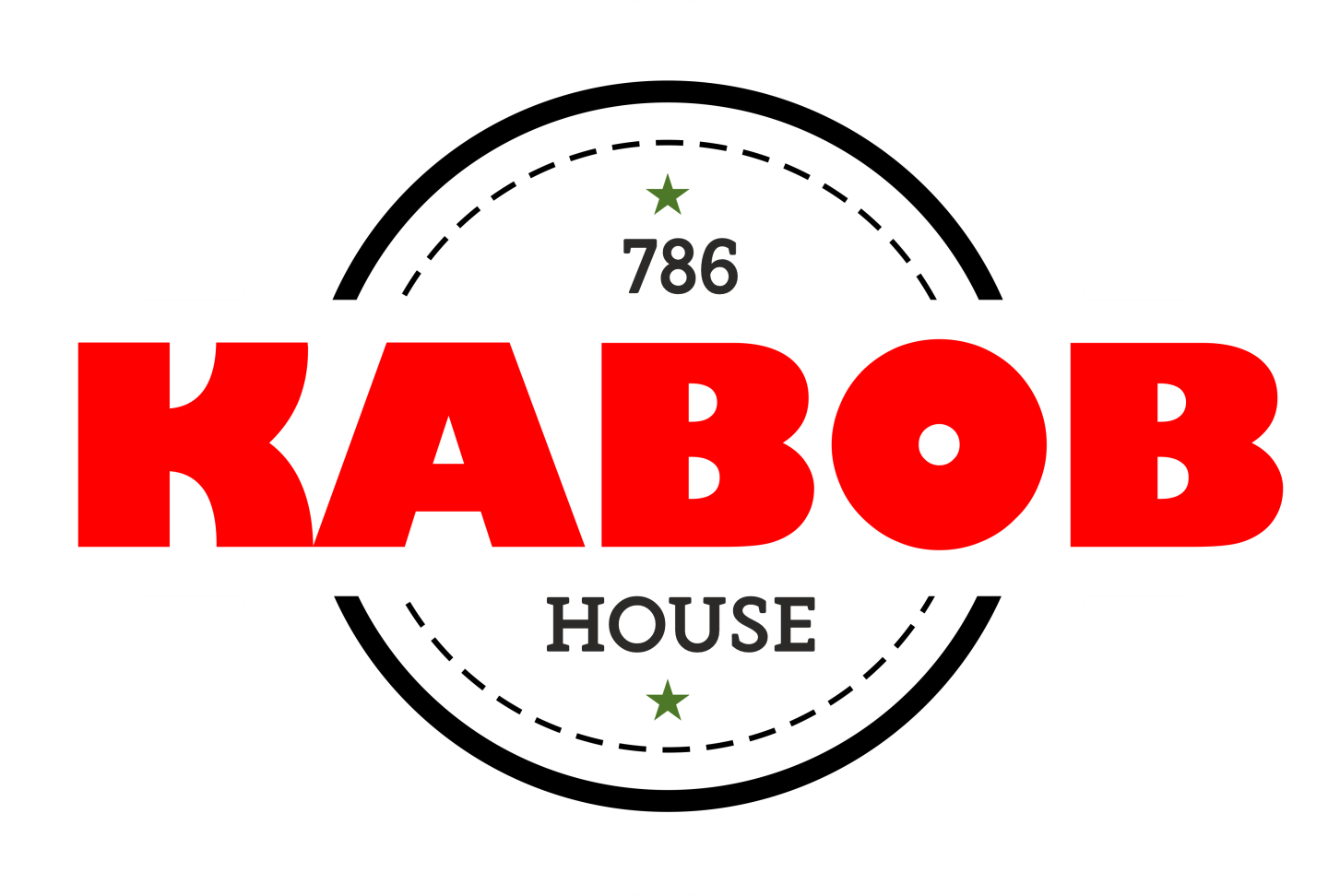Subtotal: $318.00
Pallow Paradise: Exploring the Aromatic Rice Dishes at 786 Kabob House
Introduction
There’s comfort in a bowl of fragrant rice—each grain separate, each bite colored by spices, meat, and care. In Afghan cuisine, pallow (or “palaw”) is more than a side dish: it’s a centerpiece. At 786 Kabob House, their pallow offerings — Quabili Pallow, Mahicha Pallow, and Molong Pallow — tell the story of Afghan culinary heritage adapted for Newark. In this post, we’ll wander through the history of pallow, break down what makes each variant unique, and share pairing tips so diners can order like connoisseurs. If your searches include terms like “Quabili Pallow recipe,” “Afghan pallow dishes,” “rice & meat combinations,” or “best pallow in Newark,” this is your map.
What Is Pallow? (Pilaf, Palaw, Palau — Names & Roots)
Etymology & cultural roots
“Pallow,” “palaw,” “pilaf,” “palau,” “plov” — variations of the same ancient concept.
In Afghan cuisine, palaw often indicates rice cooked with meat, stock, and aromatics, layered or steamed to preserve texture rather than turning sticky. Afghan cuisine classifies challow (plain rice with mild seasoning) separately from palaw, which is richer and more elaborate. (Wikipedia)
The dish now known as Qabili Palaw (or Kabuli Pulao) is frequently cited as Afghanistan’s national celebratory rice dish. (Wikipedia)
In Afghanistan, rice has cultural weight: the quality of rice cooking at a wedding or household is a point of pride. (Afghan Culture Unveiled)
Technique essentials
The goal: distinct, non-sticky grains, infused with meat stock and aromatic layers.
Many recipes use a two-stage method: parboiling or partial cooking of rice, draining, then layering with sauce/meat and steaming (sometimes called “dam” method).
Caramelized onions, spices, and meat stock (or meat sauce) are often used to flavor the rice from below.
Garnishes — fried carrots, raisins, nuts — are typical in Afghan palaw variants. (The Foreign Fork)
Thus, pallow is not just rice plus meat; it’s careful layering, aromatic balance, and visual elegance.
The Three Stars at 786 Kabob House
Below, I break down what likely distinguishes each variant (drawing from Afghan tradition and inferred menu logic). When you adapt to 786’s version, you’ll want to check proportions, spice balance, and cooking times.
1. Quabili Pallow (Qabili / Kabuli Palaw)
Overview & history
The most iconic Afghan palaw. Also spelled Qabili Palaw, Kabuli Pulao, Kabuli Palaw. (Wikipedia)
It often features lamb or mutton, sometimes chicken, layered with a sweet-savory garnish of carrots, raisins, and toasted nuts. (The Foreign Fork)
As Afghan culture spread, variants of Qabili became known across the region. (Wikipedia)
Core components & flavor profile
- Rice: Long grain (basmati or similar), parboiled then steamed.
- Meat & sauce: Usually lamb or mutton cooked in onion, garlic, mild spices, forming a rich broth or sauce.
- Garnish: Julienned or matchstick carrots caramelized (sometimes with a bit of sugar), raisins plumped, and nuts (almonds or pistachios).
- Spices: Cumin, cardamom, black pepper, sometimes cinnamon, often a house “char masala” or Afghan equivalent.
What to expect at 786
- Tender lamb or mutton pieces mingled with the rice; sauce layered beneath or mixed in.
- Garnishes of sweet carrots & raisins adding textural contrast.
- Balanced aromatics: not overpowering spice, but a harmony of savory, slightly sweet, earthy.
Serving suggestions
- Serve with a side of plain yogurt or raita (cool contrast).
- Grilled kabob skewers pair beautifully — e.g., lamb or chicken skewers.
- Light salad or chopped cucumbers & tomatoes to add freshness.
- A mild mint/chive chutney can cut through richness.
2. Mahicha Pallow (Mahi Pallow / Fish Rice Variation)
What “Mahicha / Mahi” suggests
In many South Asian and Persian-influenced cuisines, “mahi” or “mahicha” refers to fish. So Mahicha Pallow likely means fish rice palaw.
While not as commonly documented in Afghan cuisine (where meat palaw dominates), a fish version may adapt the palaw framework to seafood.
Key features (inferred)
- Protein: Fish fillets or chunks — ideally a firm, mild fish that won’t flake too easily.
- Spices & marinade: Slightly lighter than heavy meat versions; more citrus, less heavy sauce.
- Rice integration: The fish may be layered or mixed in carefully so grains don’t break under pressure.
Flavor & texture considerations
Because fish is delicate, cooking time must be controlled.
Aromatics like garlic, ginger, a touch of paprika or turmeric, and possibly coriander leaf will shine more (versus heavy meat perfumes).
Garnish may lean toward fresh herbs, toasted seeds, or mild nuts rather than strongly sweet components.
Pairing tips
- A side of fresh salad, lemon wedges, or pickled vegetables works well.
- Yogurt sauces with herbs complement fish nicely.
- A lighter kabob (e.g. chicken) rather than a heavy lamb will balance the meal.
3. Molong Pallow (Molung / Molong / Mullong Variation)
Possible interpretations & features
“Molong Pallow” is less commonly documented in standard Afghan cookbooks, so this likely is a menu-specific variant (possibly a custom or regional twist). Based on phonetics and similar names in Afghan / Central Asian cuisine, here’s how we can interpret it.
It might be a vegetable or subtle meat version (less heavy), perhaps with molong as a local rendering of “mulung” or “mung bean / lentil” rice, or a palaw with mild gravy/less intense garnish.
Could also refer to a milk/cream-infused or lighter palaw (less caramelization, more delicate flavors).
It may be designed to be a more daily, lighter version of pallow.
Flavor profile (inferred)
- Gentle spicing — cumin, coriander, mild aromatics.
- Less sweet garnish, maybe simpler — herbs, nuts, soft vegetables.
- Emphasis on fragrant rice over rich sauce.
How 786’s version might differ
- A middle ground between plain rice and the heavier Quabili.
- Might be more accessible for diners who don’t want strong sweetness or heavy meat flavors.
- Could pair with mild kabobs or use as a base with multiple protein choices.
Side-by-Side Comparison & What Differentiates Them
| Variant | Protein / Base | Garnish & Accents | Spice & Sauce Strength | Best For… |
|---|---|---|---|---|
| Quabili Pallow | Lamb or mutton (or chicken) | Caramelized carrots, raisins, nuts | Rich, balanced sweet + savory | Celebrations, flagship menu item |
| Mahicha Pallow | Fish | Herbs, light nuts or seeds | Lighter, citrus or herb angled | For those who prefer seafood or lighter fare |
| Molong Pallow | Possibly vegetarian or light meat | Fewer sweet elements, more herbs | Mild, aromatic | A go-to for moderate flavor or variety in menu |
Step-by-Step Cooking Logic (with Notes for 786 Adaptation)
Below is a rough, generalized outline. Use it to understand the technique; 786 may have tweaks for efficiency or consistency.
Step 1: Rice preparation
- Wash rice thoroughly (3–4 times) to remove surface starch — helps avoid clumping.
- Parboil in salted water until grains are about 70–80% done (outer layer soft, inner core slightly firm).
- Drain and rinse with cool water to stop cooking.
Step 2: Meat / Protein & sauce base
- For Quabili: brown onion, garlic, meat (lamb/mutton) with spices (cumin, cardamom, black pepper). Add stock or water, simmer until meat nearly tender and sauce is thickened.
- For Mahicha: lightly sauté aromatics, add fish pieces, a splash of stock or water, cook gently so fish holds shape.
- For Molong: create a base sauce (or light gravy) with onion, gentle spices, herbs. Could skip heavy sauce in some versions.
Step 3: Garnish cooking (for Quabili style)
- Julienne carrots, sauté or caramelize with a bit of oil/butter and sugar, until soft and gently browned.
- Plump raisins by briefly sautéing or soaking.
- Toast nuts (almonds, pistachios) lightly in ghee or oil; drain.
Step 4: Layering & steaming (dam method)
- In a pot, layer: a bit of sauce or meat base at bottom, then a mixture of parboiled rice, then more sauce, meat, garnish.
- Make a few holes in rice to let steam flow.
- Cover tightly (often with cloth under the lid to catch moisture) and steam on low heat (10-25 minutes) until rice is fully cooked, aromatics have penetrated, and grains are separate.
Step 5: Serving & finishing
- Fluff the rice gently.
- Garnish the top with reserved carrots, raisins, nuts.
- Arrange meat/fish attractively (if separate).
- Serve immediately with cooling sides or sauces.
Pairings & Serving Tips (Make It a Full Plate)
To make a meal rather than a rice dish, combine your chosen pallow with:
- Kabobs: Quabili pairs beautifully with lamb or beef kabobs; mahicha pairs well with chicken or light kabob; molong can accompany any lighter skewer or vegetarian side.
- Yogurt sauces / raita: Cucumber raita, mint yogurt, or plain yogurt reduce richness.
- Fresh salad or chopped vegetables: chopped cucumber, tomato, onion with lemon juice adds brightness.
- Pickles & chutneys: a tart or spicy element (e.g. pickled onions or chili paste).
- Flatbread or naan / pita: helps scoop and enjoy alongside.
- Light beverages: mint tea, cold yogurt drinks (dogh), or sparkling water to cleanse.
If you aim to promote the dish, you could suggest pairing combos (e.g. “Quabili Pallow + lamb kabob + mint raita = perfect combo”).
SEO Keywords & Integration Tips
To increase search visibility, you’ll want to sprinkle the keywords naturally (don’t force). Here are how and where:
- Title / headings: Quabili Pallow, Afghan Pallow dishes, best pallow in Newark
- In introductory paragraphs: (“When you search for Quabili Pallow recipe or Afghan pallow dishes, you’ll find…”).
- In captions for images: “Quabili Pallow with lamb — one of the signature Afghan pallow dishes at 786 Kabob House.”
- In FAQ / “People Also Ask” style: “What is Quabili Pallow recipe?”, “Which is the best pallow in Newark?”
- In internal links: link to your blog posts on kabobs or desserts (“Pairing Quabili Pallow with their signature lamb kabob”)
- Alt text for images: “Mahicha Pallow fish rice dish Newark”, “Molong Pallow Afghan rice variant”
The key is natural integration — let the narrative carry the keywords rather than the other way around.
Local Context & Why 786’s Pallow Can Be a Differentiator
- Local SEO tie-ins: phrases like “best pallow in Newark CA,” “Afghan rice dishes Newark,” or “where to find Quabili Pallow near me.”
- Ingredient sourcing: if 786 Kabob House uses fresh basmati rice from nearby suppliers or special imported Afghan rice, mention that to emphasize quality.
- Customization & menu flexibility: readers love knowing — “If you prefer less sweetness, order Quabili Pallow ‘light garnish’ at 786” etc.
- Visual appeal: images of the three pallow variants side by side can help people choose, especially newcomers.
- Customer stories or testimonials: short quotes like “I come for the Quabili Pallow every time” help with social proof.
Suggested Blog Structure (for readability & SEO)
- Introduction (what is pallow, why it matters)
- Section: History & technique of pallow
- Section: Variant 1 — Quabili Pallow (with sub-headings: meat, garnish, method, pairing)
- Section: Variant 2 — Mahicha Pallow
- Section: Variant 3 — Molong Pallow
- Section: Side-by-side comparison
- Section: Cooking logic / steps
- Section: Pairings & serving tips
- Section: Local twist & ordering suggestions
- FAQ
- Call to action (e.g. “Come try all three Pallow variants at 786 Kabob House — order online or dine in today”)
Sample FAQ & Snippets You Can Use
Q: What is the difference between Quabili Pallow and Mahicha Pallow?
A: Quabili Pallow is the classic Afghan meat-based rice dish with caramelized carrots, raisins, and nuts. Mahicha Pallow is a fish version, lighter in flavor and designed for those who prefer seafood over red meat.
Q: What does “Molong Pallow” mean?
A: At 786 Kabob House, Molong Pallow is a lighter variant—less sweet garnish, milder spice, often used when you want aromatic rice without heavy sauce. (Check with staff if unsure.)
Q: Which Pallow should I try first?
A: Start with Quabili Pallow — it’s their flagship and helps you taste the full depth of flavors. Then next time try Mahicha or Molong for variety.
Q: Can I order Pallow without meat (vegetarian)?
A: Depends on the menu. Molong Pallow may offer a lighter or vegetarian spin—ask staff. Otherwise, they could adapt with extra vegetables or omit the meat.
Q: What’s the best time to serve Pallow (occasion)?
A: Pallow is often served at celebrations, family dinners, or as a main dish. Combined with kabobs and sides, it makes a full meal.
Closing Thoughts
In Afghan culinary culture, rice is never just filler. It’s the quiet stage on which meat, spices, and garnishes perform. Through Quabili Pallow, Mahicha Pallow, and Molong Pallow, 786 Kabob House offers a spectrum: from grand, festive depth to lighter, everyday elegance. For diners trying to choose, the key lies in what mood you’re in: crave richness and sweetness? Go Quabili. Want something lighter or fish-based? Mahicha. Seek aromatic simplicity? Molong. And of course, pair right: grilled skewers, yogurt sauces, fresh salad — those contrast and complement.
 Daria Shevtsova
Daria Shevtsova Chicken Masala
Chicken Masala Sicilian Pizza
Sicilian Pizza Beef Masala
Beef Masala Martin Widenka
Martin Widenka
